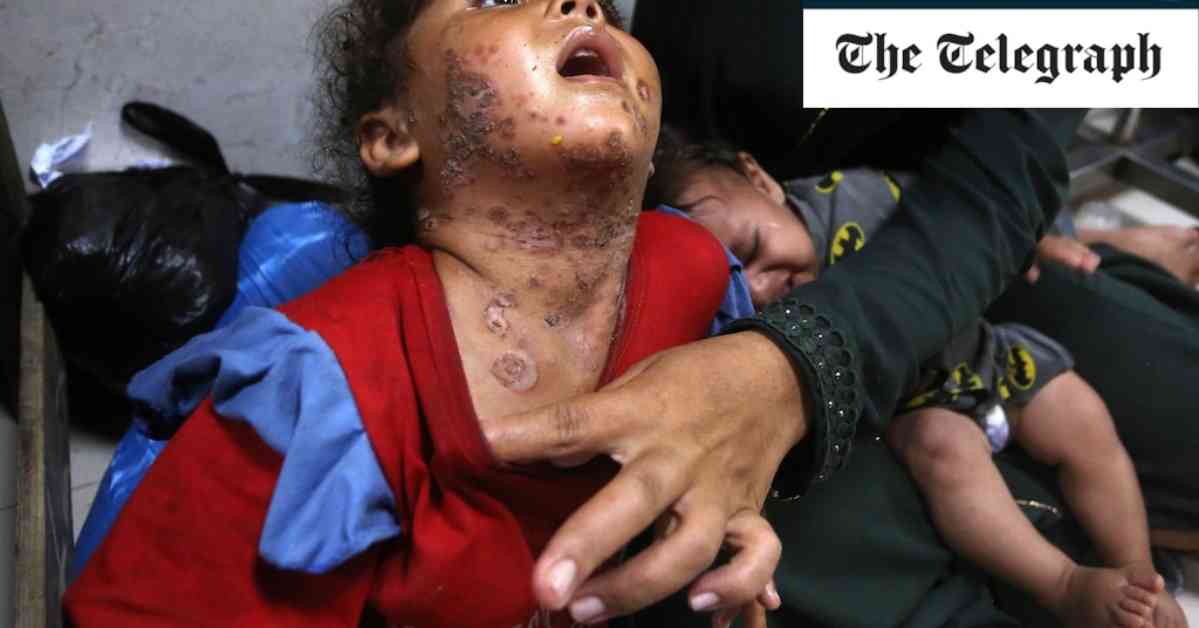Skin Diseases Impacting Children in Gaza: Understanding, Prevention, and Urgent Action Needed
The dire situation in Gaza has been exacerbated by a lack of clean water and basic sanitation, leading to outbreaks of painful infections among children. Aid workers on the ground have sounded the alarm, highlighting the urgent need for intervention to prevent further suffering.
The World Health Organization (WHO) reports that over 150,000 people in Gaza have contracted skin diseases since the start of Israel’s military offensive in October. Scabies, a highly contagious skin condition characterized by intense itching, has been the most prevalent, with at least 100,000 cases recorded. The lack of access to medicines, hygiene products, and clean water has contributed to the surge in infections of skin ulcers, scabies, lice, chickenpox, and skin rashes.
Challenges in Treatment and Care
Efforts to treat those afflicted with skin diseases have been hampered by persistent Israeli strikes and relocation orders, making it difficult for many Gazans to access healthcare facilities. Ghada Alhaddad from Oxfam reports that most of the patients being seen by dermatologists are children. Tragically, the lack of basic necessities such as clean water and hygiene products has left families struggling to care for their sick children.
A mother, Asma, shared her heartbreaking story of resorting to using sea water for cooking, washing, and laundry due to the lack of clean water. Her seven-year-old son’s constant scratching due to skin infections has made sleeping through the night impossible. The dire living conditions in Gaza, compounded by the collapse of the waste management system, have created a breeding ground for preventable skin infections.
Urgent Need for Sanitation and Access to Clean Water
The collapse of Gaza’s sanitation system has created ideal conditions for outbreaks of skin diseases. The destruction of water facilities during the conflict has left Gazans with minimal access to clean water, far below the recommended minimum for emergencies. The lack of sanitation and basic hygiene practices has led to a surge in emerging infectious diseases, including a major outbreak of Hepatitis A among children in the enclave.
Efforts to address the sanitation crisis in Gaza have been hindered by ongoing challenges, with aid groups struggling to repair infrastructure, install septic tanks, and distribute clean water. The humanitarian aid delivered so far, including water bottles, medical supplies, and hygiene kits, has been insufficient to meet the scale of the crisis.
Call for Immediate Action
The situation in Gaza demands immediate attention and action to prevent further suffering among vulnerable populations, especially children. The complex interaction of high temperatures, a ruptured sewage system, and solid waste accumulation has fueled the spread of infectious diseases, posing a significant threat to public health.
It is imperative that international aid organizations, governments, and humanitarian agencies come together to address the urgent needs of the people in Gaza. Improving sanitation, ensuring access to clean water, and providing essential medical supplies are critical steps to alleviating the suffering caused by preventable skin diseases.
As the international community rallies to support Gaza, it is crucial to prioritize the health and well-being of children, who are among the most vulnerable to the devastating impact of inadequate sanitation and lack of access to healthcare. The time to act is now to prevent further harm and alleviate the suffering of those affected by skin diseases in Gaza.












